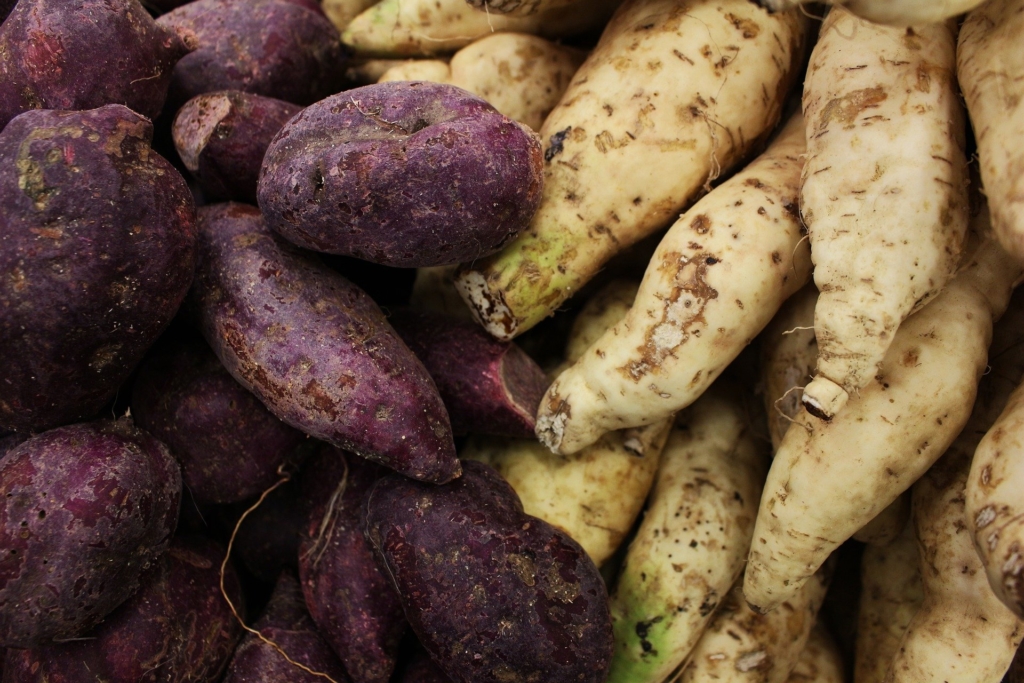Not to be confused with taro or purple sweet potato, ube has a rich texture and a vanilla-like undertone that’s difficult to replicate. Add it to your desserts and beverages to create layered sweetness while imparting its signature purple hue.
History
Purple yam can be found throughout Southeast Asia but is most widely recognized for its use in Filipino cuisine. The sweet tuber, locally known as ube, is used to add flavor and color to traditional snacks and desserts.
The rising popularity of ube in the United States can be attributed to the Filipino American diaspora. Filipinos who migrated to the United States introduced the ingredient to the country, and its unique color and sweet flavor helped cement the yam’s status as a highly sought-after ingredient for chefs and home cooks looking to expand their culinary repertoire.
Flavor and Appearance

Purple yam or ube has the earthiness and starchiness of sweet potato with a slightly nutty undertone and a mellow sweetness reminiscent of vanilla or coconut.
Ube has a cool brown outer skin with a rough texture, visually similar to tree bark. As indicated by its name, its flesh has a characteristic purple hue, ranging from vibrant violet to subtle lavender to creamy white with flecks of purple.
Despite its similarities to purple sweet potato and taro, ube is a completely different tuber. Though they have the same purple hue, ube has a creamier texture and a sweet pistachio-like flavor that isn’t present in the more widely-available root vegetables.
Uses
Because of its milky flavor, ube lends itself more commonly to sweet recipes. In the Philippines, ube is traditionally cooked with milk and butter to make ube halaya, a sweet purple jam. This jam is then used as a filling for pastries or to add flavor and color to baked goods and steamed desserts.
To incorporate ube in your cooking, you can steam whole fresh ube or buy frozen grated ube. Consider using it in place of regular sweet potato for puddings, pies, and cakes. Ube’s rich texture and mild sweetness can also add depth to creamy beverages such as lattes and milk tea.
Image Credit: Flickr user Marco Verch (CC BY 2.0)



